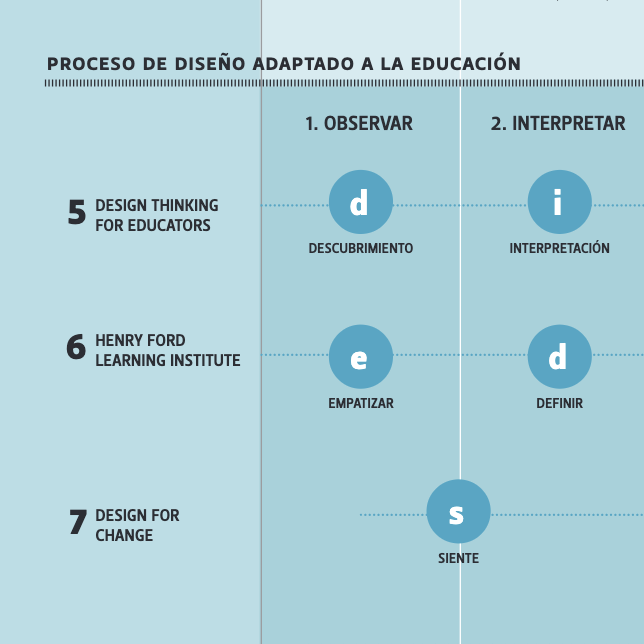Visual analogies Representation of the design process and its application in the field of education
Main Article Content
Abstract
In recent years, design thinking has been understood and spread as a method of creative problem solving, available for professionals of other disciplines, with the purpose of encouraging creative thinking, the identification of problems and the development of solutions (Johansson-Sköldberg et al., 2013; Dost, 2011; Hassi & Laakso, 2011).
Article Details
References
Alexander, C., (1964), Notes on the Synthesis of Form (Vol. 5), Boston, USA: Harvard University Press.
Caroll, M., (2015), Stretch, Dream, and Do-A 21st Century Design Thinking & STEM Journey, Journal of Research in STEM Education, 1(1), 3-16.
Cross, N., (1999), Métodos de diseño: estrategias para el diseño de productos, México: Limusa.
Cross, N., (2011), Design Thinking: Understanding How Designers Think and Work, UK: Berg Publishers.
Design for Change. Extraído el 1 de junio de 2016 desde: http://www.dfcworld.com
Design for Change España. Extraído el 1 de junio de 2016 desde: http://www.dfcspain.com
Design for Change Chile. Extraído el 1 de junio de 2016 desde: http://dfcchile.cl
Design Council (2014). Innovation by design. How design enables science and technology research to achieve greater impact. Extraído desde http://www.designcouncil.org.uk/sites/default/files/asset/document/innovation-by-design.pdf
Dorst, K., (2011), The core of ‘design thinking’and its application, Design studies, 32(6), 521-532.
Dorst, K., & Cross, N., (2001), Creativity in the design process: co-evolution of problem–solution, Design studies, 22(5), 425-437.
Dubberly, H., (2004), How do you design? San Francisco, USA: Dubberly Design Office.
Dubberly, H., & Evenson, S., (2008), On modeling The analysis-synthesis bridge model, interactions, 15(2), 57-61.
Dubberly, H., & Evenson, S., (2011), Design as learning---or knowledge creation---the SECI model, interactions, 18(1), 75-79.
FabLab Teacher Studio. Project Planing Document. Extraído el 1 de junio de 2016 desde: https://sites.google.com/site/stemfabstudio/minicourse/1172011-11112011
Hassi, L., & Laakso, M., (2011, October), Conceptions of Design Thinking in the design and management discourses. In Proceedings of IASDR2011, the 4th World Conference on Design Research, Delft (pp. 1-10).
Henry Ford Learning Institute. HFLI´s Design Thinking Model. Extraído el 1 de julio de 2016 desde: http://hfli.org/redesigning-how-we-learn/
Ideo (2012) Design Thinking for Educators. Extraído el 1 de julio de 2016 desde: http://www.designthinkingforeducators.com/
Ideo, BMGF, IDE, Heifer International & ICRW .,(2009), Design Kit Human- Centered Design Toolkit, IDEO.
Johansson-Sköldberg, U., Woodilla, J., & Çetinkaya, M., (2013), Design thinking: past, present and possible futures, Creativity and Innovation Management, 22(2), 121-146.
Kangas, K., Seitamaa-Hakkarainen, P., & Hakkarainen, K., (2013), Design thinking in elementary students’ collaborative lamp designing process, Design and Technology Education: An International Journal, 18(1).
Kelley, T., & Kelley, D., (2013), Creative confidence: Unleashing the creative potential within us all, USA: Crown Business.
Kumar, V., (2012), 101 design methods: A structured approach for driving innovation in your organization, John Wiley & Sons.
Munari, B., & Rodríguez, C. A., (1983), ¿Cómo nacen los objetos?, México Gustavo Gili.
Rittel, H. W., & Webber, M. M., (1973), Dilemmas in a general theory of planning, Policy Sciences, 4(2), 155-169.
Scheer, A., Noweski, C., & Meinel, C., (2012), Transforming constructivist learning into action: Design thinking in education, Design and Technology Education: An International Journal, 17(3).
Watson, A. D., (2015), Design Thinking for Life, Art Education, 68(3), 12-18.


